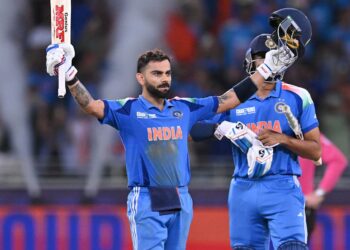Pakistan beats West Indies by 126 runs in the 1st ODI on 14 July 2013 with the help of Shahid Afridi career best all round performance scoring 76 runs off 55 balls and taking his career best 7 wickets in 9 overs giving away only 12 runs.
Match Report:
“Who writes your scripts?” England’s legendary allrounder Ian Botham was asked after taking a wicket first ball on his Test comeback in 1986. The same question can be asked of another flamboyant cricketer today as Shahid Afridi turned in one of the greatest all-round ODI performances to flatten West Indies in his comeback game.
With Pakistan axing a whole host of experienced players in recent months – including Younis Khan, Shoaib Malik and Kamran Akmal – there had been murmurs over whether Afridi’s ODI career should have been given yet another lifeline. He’s someone who sees himself as a bowling allrounder in recent years, and with no wickets in six previous ODIs, the doubts were justified. Afridi squashed them, and how – a game-transforming half-century and then the second best one-day bowling figures of all time.
Even in a career as wildly fluctuating as his, there can be few moments when the turnaround in fortunes is this stark. It is the ability to deliver these truly gobsmacking performances that has earned him a loyal legion of fans, who swear by him even during extended runs of failures.
Before he walked in to bat on a drizzly morning in Providence, Pakistan’s top order had once again keeled over against the moving ball as Jason Holder delivered a searing new-ball spell of 8-4-8-4. The manner of those dismissals would have been as demoralising for Pakistan’s fans as the scoreline, with two top-order batsmen being bowled when looking to leave the ball.
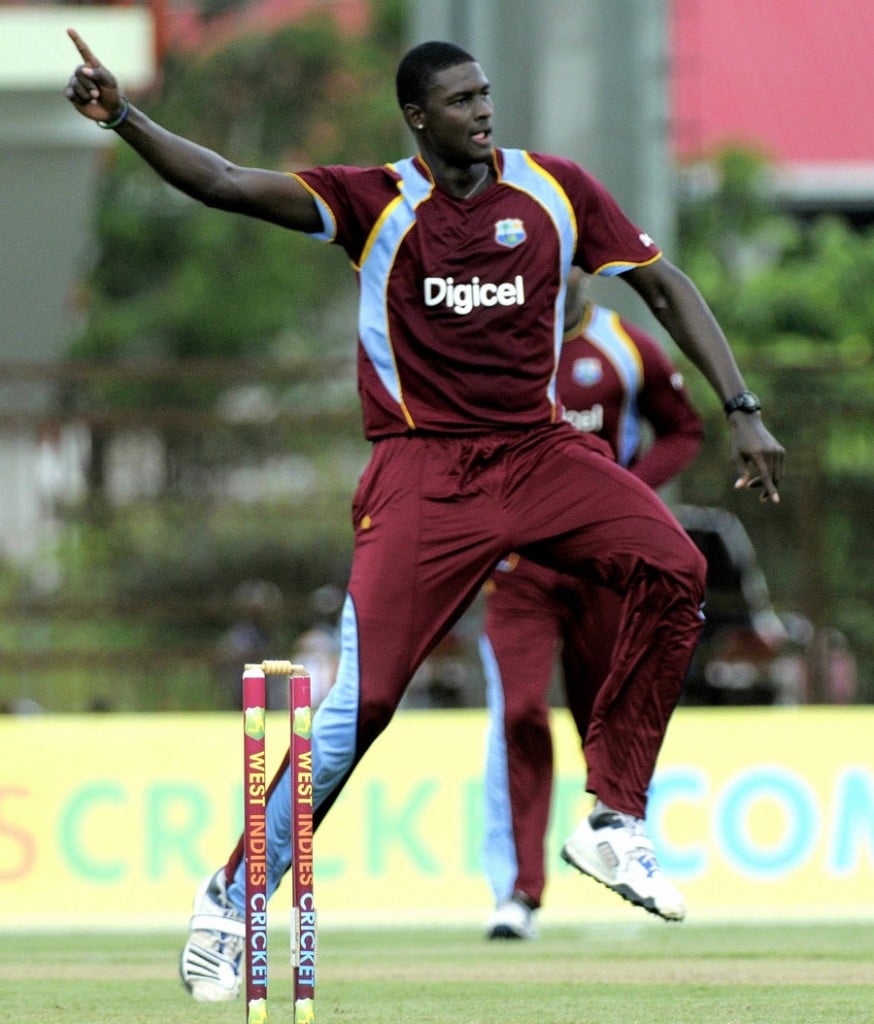
Misbah-ul-Haq was playing his usual hold-the-innings-together role scoring at about a run an over, but when Afridi strode out, he was immediately looking to score at a run a ball. Pakistan were 47 for 5 and the team’s last recognised batting pair was in the middle, but that didn’t prevent Afridi from launching his third delivery for six over long-off. Given his kamikaze style of play, a quick end to his innings wouldn’t have surprised. It almost did after he belted another six and a four, but Chris Gayle put down a tough chance at slip.
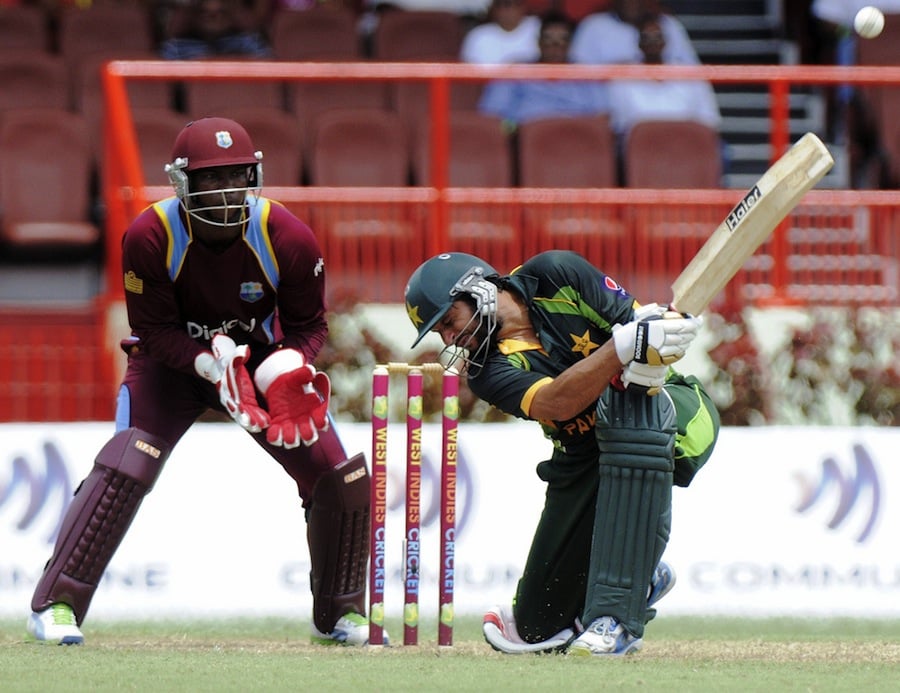
After that, he could take lesser risks despite scoring rapidly as West Indies’ bowlers offered several boundary balls. Marlon Samuels offered long hops and full tosses that were dispatched beyond the rope, Darren Sammy was cleverly dinked over the shoulder before his half-volley was pounded through extra cover to bring up the half-century off 35 deliveries. The man who was expected to be the biggest threat, Sunil Narine, was caned out of the attack, taken for 32 in three overs.
On a track where the rest of the Pakistan team combined to score 120 off 245, Afridi plundered 76 off 55, showing the insouciance and big-hitting that typifies his batting. Misbah added to his ever-expanding collection of ODI half-centuries as well, on a track which he called one of the toughest he has come across, and his partnership with Afridi underlined how two vastly different styles of batting can both be crucial to the team’s cause. Their efforts drove Pakistan to 224, which seemed like a challenging target for West Indies.
Twenty minutes into the chase, that seemed a far larger score as West Indies were reduced to 7 for 3, the second lowest score for which they have lost three wickets in ODIs. It began with Mohammad Irfan’s swinging, 146kph low full toss that resulted in a golden duck for Johnson Charles in the first over. The pace and bounce of Irfan disconcerted the batsmen, with Darren Bravo the next to go, caught down the leg side.
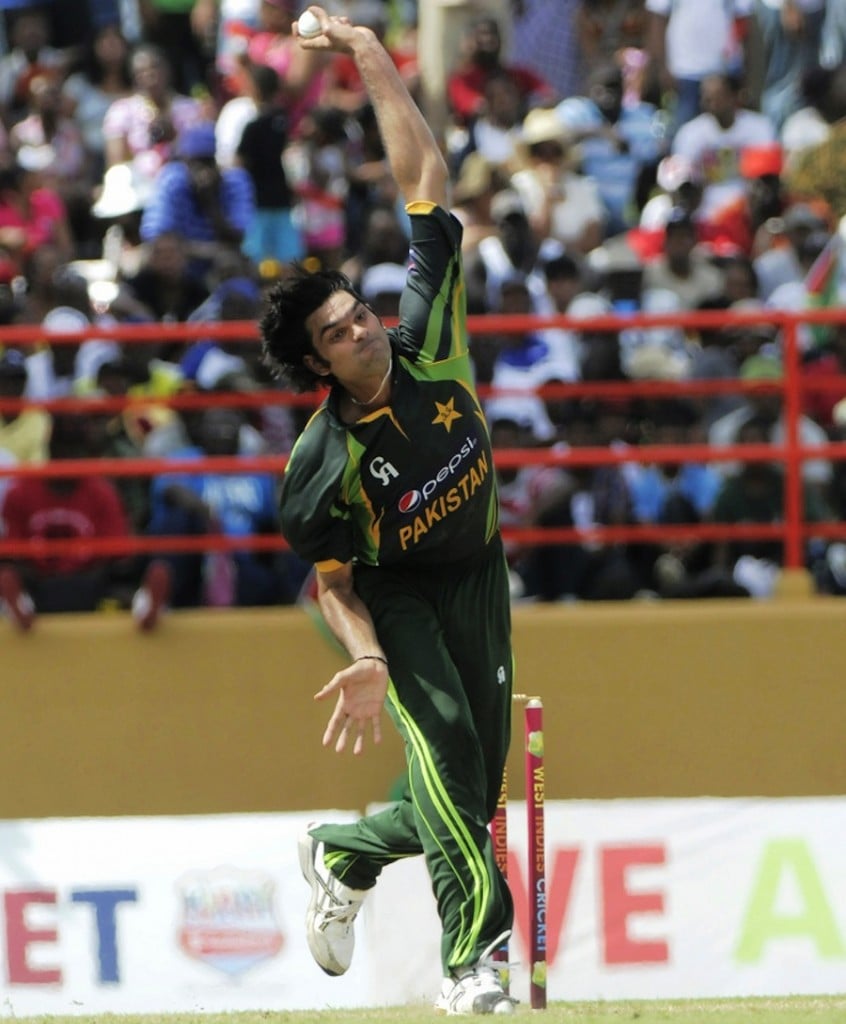
The biggest breakthrough, though, came through a direct hit from Misbah at cover, catching Chris Gayle well short while attempting a single that would have been tough for the quickest of runners, but was hara-kiri for a slow-mover like Gayle. Pakistan knew well the importance of that wicket – Misbah was midway through celebrating the dismissal when he was swamped by his joyous team-mates.
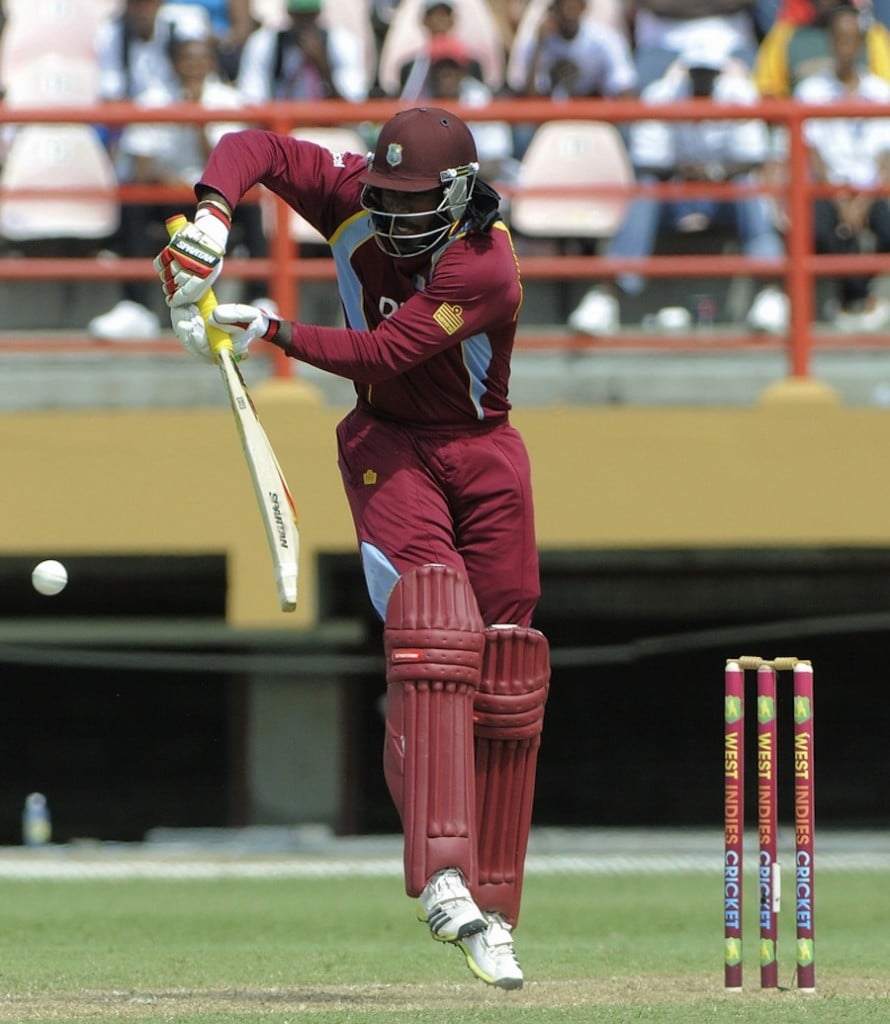
Marlon Samuels and Lendl Simmons then cut out all risk, and played ultra-cautious cricket against some top bowling from Pakistan. “Huge pressure is there, huge pressure,” wicketkeeper Umar Akmal frequently reminded the batsmen. The biggest strength in the Pakistan line-up is the quality they have across their bowling, with no major weak links.
With Simmons and Samuels batting out 15 overs – and scoring only 34 on a turning track – the required-rate had crept above six, but West Indies were still optimistic of winning. Afridi was only brought on as the sixth bowler, but there was no stopping him from being the headliner. In his second over, he had Simmons stumped and Dwayne Bravo lbw next ball. He was showing off his famous starman celebration, and West Indies’ chances were evaporating.
His mix of legspinners, quick sliders, the occasional googly and even the odd offbreak proved too much for West Indies’ batsmen. Kieron Pollard’s had three ducks in his previous four ODI innings, and his lack of confidence was apparent, as he holed out to long-off for 3. Not long after, Afridi had Samuels lbw with a delivery that turned in. The big crowds that had turned up in Guyana knew the game was up and headed for the exit.
Afridi’s five-for came soon after as Kemar Roach handed a simple return catch, and his figures were an unbelievable 6-2-6-5, with every delivery seemingly a wicket-taking one. He didn’t strike in the next couple of overs though and was taken out of the attack, before being brought back six overs later as Sammy and Narine somehow survived the other bowlers. They didn’t last against Afridi, though, who needed only one over to wrap up the match and consign West Indies to their lowest ever total in a home ODI.
The fans in Guyana had been starved of international cricket for two years after a conflict between the government and the country’s cricket board, and while they were treated to an awe-inspiring performance from Afridi, they would have wanted more from the consistently misfiring West Indian batting.
Video Highlights:
Part 2
Part 3
Part 4
Part 5
Scorecard:
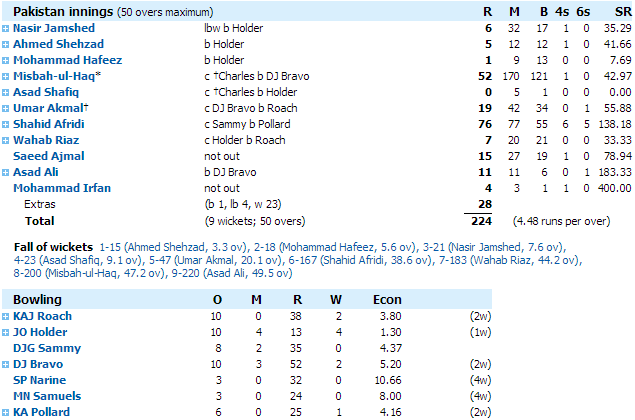
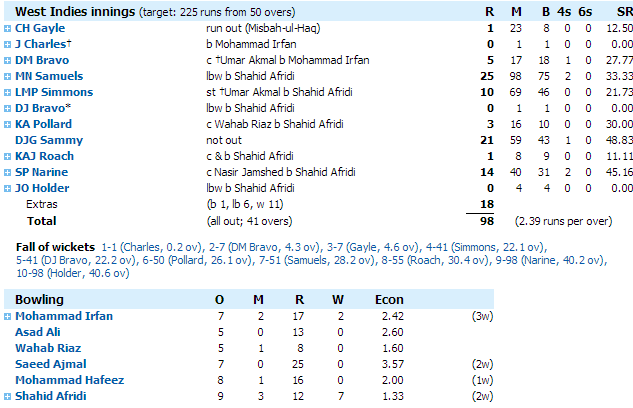
Source: Cricinfo.com, Cricketveerablogspot.com






